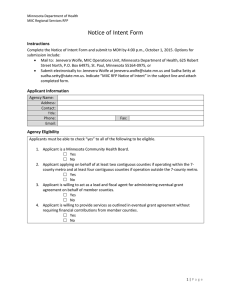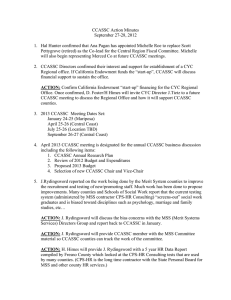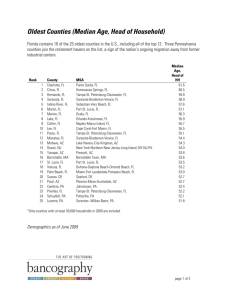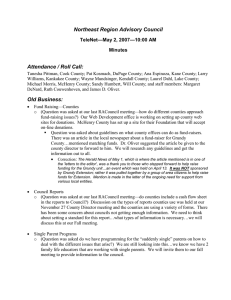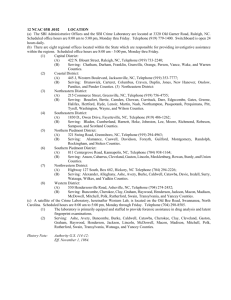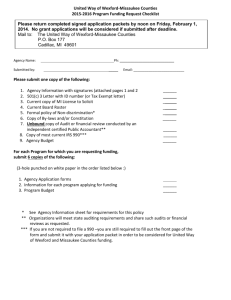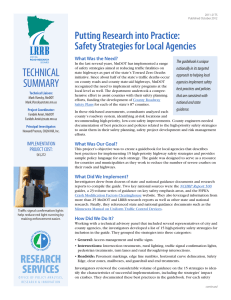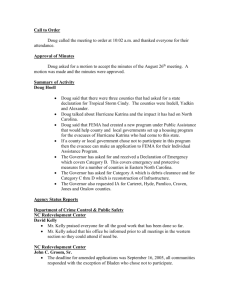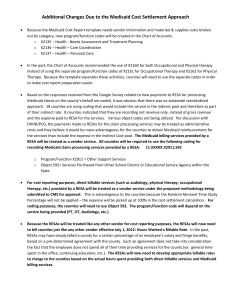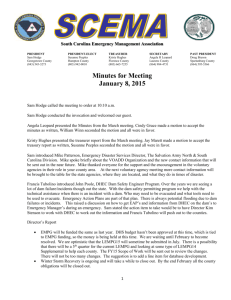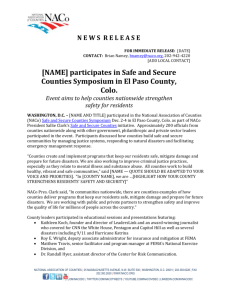Minnesota Council on Local Results and Innovation Standards for a
advertisement
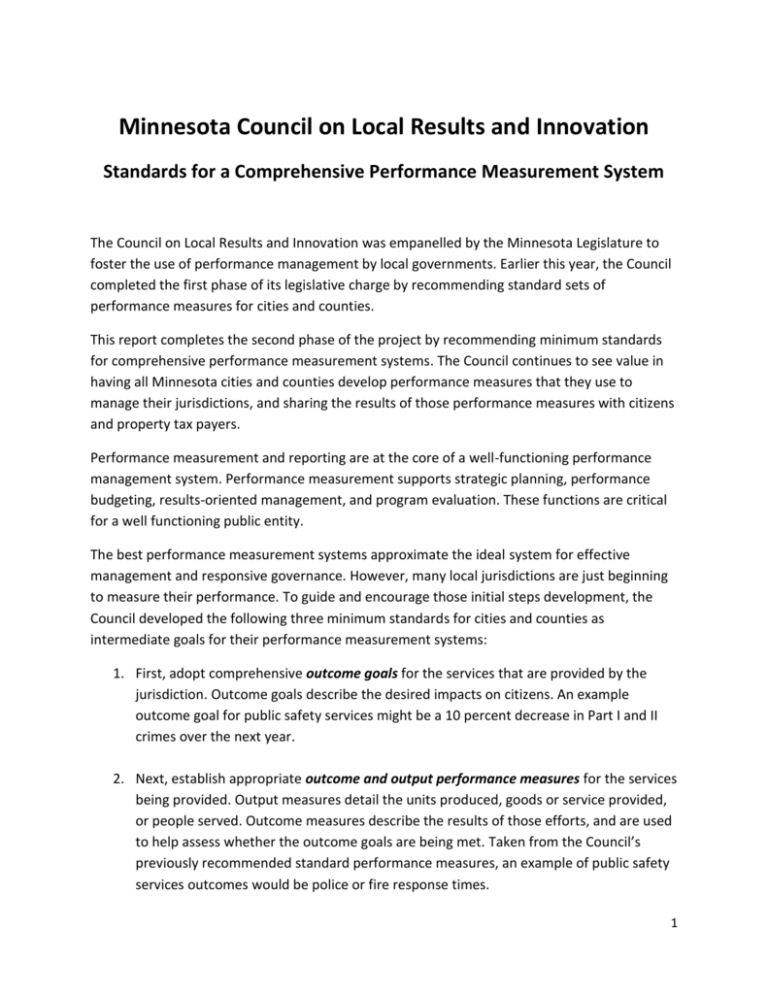
Minnesota Council on Local Results and Innovation Standards for a Comprehensive Performance Measurement System The Council on Local Results and Innovation was empanelled by the Minnesota Legislature to foster the use of performance management by local governments. Earlier this year, the Council completed the first phase of its legislative charge by recommending standard sets of performance measures for cities and counties. This report completes the second phase of the project by recommending minimum standards for comprehensive performance measurement systems. The Council continues to see value in having all Minnesota cities and counties develop performance measures that they use to manage their jurisdictions, and sharing the results of those performance measures with citizens and property tax payers. Performance measurement and reporting are at the core of a well-functioning performance management system. Performance measurement supports strategic planning, performance budgeting, results-oriented management, and program evaluation. These functions are critical for a well functioning public entity. The best performance measurement systems approximate the ideal system for effective management and responsive governance. However, many local jurisdictions are just beginning to measure their performance. To guide and encourage those initial steps development, the Council developed the following three minimum standards for cities and counties as intermediate goals for their performance measurement systems: 1. First, adopt comprehensive outcome goals for the services that are provided by the jurisdiction. Outcome goals describe the desired impacts on citizens. An example outcome goal for public safety services might be a 10 percent decrease in Part I and II crimes over the next year. 2. Next, establish appropriate outcome and output performance measures for the services being provided. Output measures detail the units produced, goods or service provided, or people served. Outcome measures describe the results of those efforts, and are used to help assess whether the outcome goals are being met. Taken from the Council’s previously recommended standard performance measures, an example of public safety services outcomes would be police or fire response times. 1 3. Finally, report the results of the performance measures at least annually to the public through general publication, direct mailing, posting on the jurisdiction’s website, or through a public hearing. This step ensures accountability to the residents and businesses we serve. To help cities and counties build on these minimum standards and evolve performance management systems, the Council has encouraged the League of Minnesota Cities and Association of Minnesota Counties to draw on their in-house expertise and experience, as well as those of their members, to support these efforts. The work of the Council was based in part on an excellent report by the National Performance Management Advisory Commission, a group of state and local public officials. This 2010 report offers a wealth of resources for cities and counties that wish to “improve their focus on producing results that benefit the public, and also give the public confidence that government has produced those results.” The full report is available at the following website: http://pmcommission.org/APerformanceManagementFramework.pdf. For further information on the reporting requirements for the performance measurement program, refer to the Office of the State Auditor website www.osa.state.mn.us. 2


